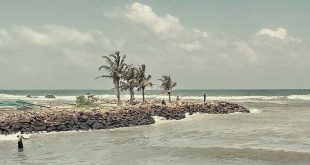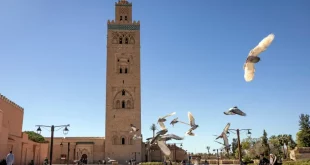Information on the weights and measures used in ancient and medieval Sri Lanka are found in Abhidhanappadipika, Navanamavaliya and the stone inscriptions. Nagalavava village in Sigiriya-Dambulla region, surveyed in the 1990s, was using measures that could be traced back to earlier times. Its system of measuring grain and medicine was common to other purana settlements and also certain urban areas.
 In medieval times the day was reckoned as 60 payas, height was in terms of a tree and depth was in bamba. Bamba is used today as well. At Nagalavava the length between a man’s outspread arms indicated a bamba. A stick or rope of this length was used for measuring.
In medieval times the day was reckoned as 60 payas, height was in terms of a tree and depth was in bamba. Bamba is used today as well. At Nagalavava the length between a man’s outspread arms indicated a bamba. A stick or rope of this length was used for measuring.
Distances were given in gavu and yojanas. Unit of measurement for road ways was also gavva and yoduna. A gavva was a quarter of a yoduna. Ariyapala looks at the scales and the distances given in Pujavali for the distance from Kalutota to Bentota. He found that the yojana distances tallied and concluded that the gavu and yojana were practical and were used. In Nagalawewa, distance is also measured in terms of hoo kiyana dura.
Land was measured as kiriya, amuna and pala in Anuradhapura period. According to Vessagiriya inscription kiriya was the largest land measure of the time. Kiriya was the square measure of land on which a kiriya of seed can be sown. A kiriya was equal to four amunas. Amuna was subdivided into four pala. Pala was the smallest land measure. Mihintale plinth course inscription refers to a pala of rice. In medieval times, land was measured by specific measures such as riyana and also according to sowing extent.
Sowing extent
At Nagalavava, the sowing extent was determined by the area over which a laha or pala of grain could be sown. The extent was calculated as the area over which a particular amount of bittara vee (seed paddy) could be sown. Kiriya equalled 160 laha or 8 acres. Amuna was equal to 40 laha or 2 to 2 ½ acres. Pala equalled the extent over which 10 laha of paddy could be sown, approximately half and acre. However, it was noted that this system of apportioning land was peculiar to Nagalavava.
 A wide range of capacity measures have been noted. Rice was measured in kareesa units. Kareesa was indicated by symbols in Nawa handa inscription and given in numerals in Situlpavva inscription. Ranwella refers to two other dry measures, lahassa and admana.
A wide range of capacity measures have been noted. Rice was measured in kareesa units. Kareesa was indicated by symbols in Nawa handa inscription and given in numerals in Situlpavva inscription. Ranwella refers to two other dry measures, lahassa and admana.
Polonnaruwa council chamber inscription refers to lahassa. He says there were different lahassa measures for dry and liquid goods.
In the medieval period the measures for grain, were naliya and kuriniya. Visuddhi magga sanniya refers to a mita of grain and the nali. In Nagalavava, the measures used are pata, hunduva, naliya, seruva, laha, pala, amuna and kiriya. Of these the pata, hunduva, naliya and seruva are common domestic measurements, while, laha, pala amuna and kiriya are used for wholesale transactions and measuring grain on the threshing floor. Pata is amount of grain that can be held in the open palm.
Hunduva equalled three pata. Naliya equalled 2 hundus. A hunduva weighed 650 mg.
Two naliya made one seruva and six seru made one laha. Five and a half laha or three seru made a busal. A smaller hunduva, with hundu bage and hundu kala was also used. The traditional hunduva was made of cane or wood.
The widely used measure of liquid capacity was the naliya. Ariyapala says Saddharmalankaraya shows that naliya was used to measure ghee and honey. Naliya and half nali (manava) were used in the modern period for ayurvedic mixtures.
Liquid capacity
Nagalavava villagers used a pair of small scales, like an apothecary’s scale and a bivalve mollusc shell that could hold approx two teaspoonfuls of liquid. Two shells called ravana katta were kept for this purpose. The dosage was two shellfuls for an adult and one drop for an infant.
This was followed until recently when the spoon was introduced. Ariyapala noted that in the medieval period, seeds were used as measures of weight.
Three tala seeds equal three amu seeds and three amu seeds equal one vee ata. Eight vee ata equal one madati. The standard weight of a majadi was also used in time of Badulla pillar inscriptions of 10 century. Gunawardane pointed out that in the Kandyan period goldsmiths, silver smiths and those practising indigenous medicine, used twenty four maditi seeds – l weighing from 3 to 3.9 grains.
Ariyapala noted that weights of kalanda and manjadi were used up to the modern period when weighing gold and medicinal ingredients. Uragoda says that the madati and olinda varied very little in weight, and were equipped with a hard shiny outer covering which would tend to prevent desiccation of their contents. They presumably had good keeping qualities and were unlikely to alter their weight to any significant extent with time. Nagalavava used the traditional system of measuring medicine. One kalanda equalled one copper cent (sathaya), half kalanda equalled half cent and one manchadiya equalled quarter cent.
Nagalavava used kirival wood, cane, jak wood, margosa wood, cow dung and resin from the seeds of the timbiri tree for making measuring tools. The traditional hunduva was cylindrical, 6-7 cm high and approximately twenty centimetres in circumference. It had a base of jak, mango or kolon wood. Perforations were made along the edge of the base. Pieces of cane or kirival were fixed as uprights; cane strips were passed between the uprights and interwoven to the width of about four fingers. A pata of rice was poured in and the level checked.
The rim was given an extra overcastting of cane and paste of resin from crushed timbiri seeds and paddy bran (hall kudu) was applied. Cow dung was used to repair any damage. Cow dung acts as an insecticide and its disinfectant properties were known from ancient times. In the laha vessel the mouth was wider than the base.
 Sri lanka Muslims Web Portal Diversity and Inclusiveness
Sri lanka Muslims Web Portal Diversity and Inclusiveness



